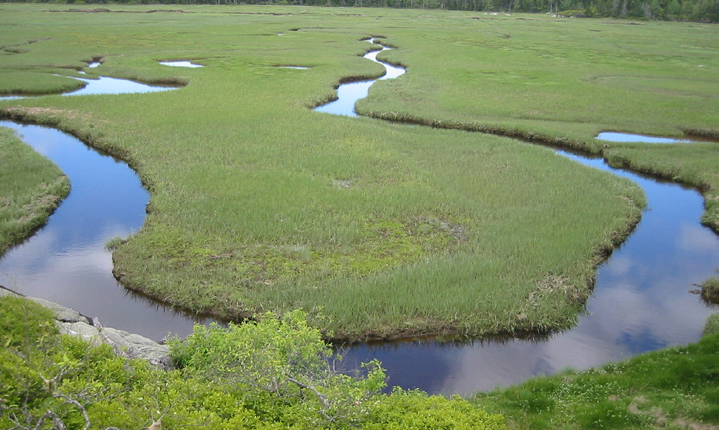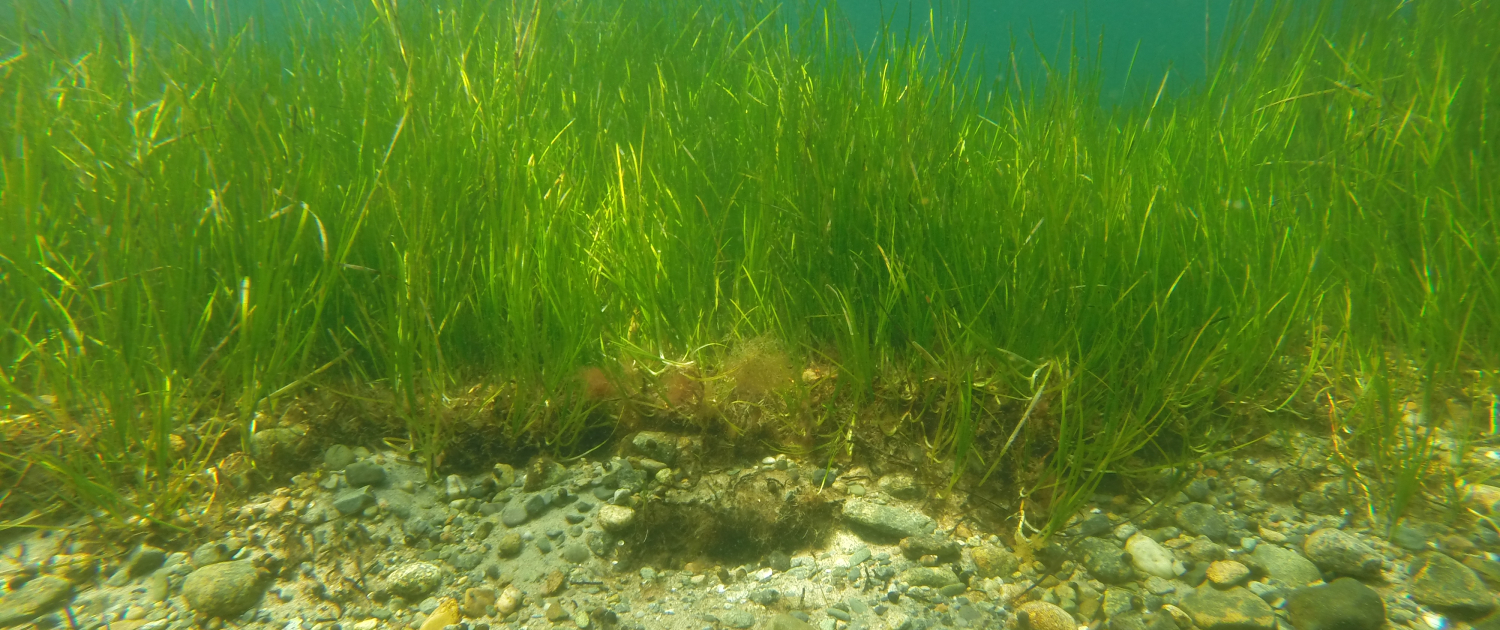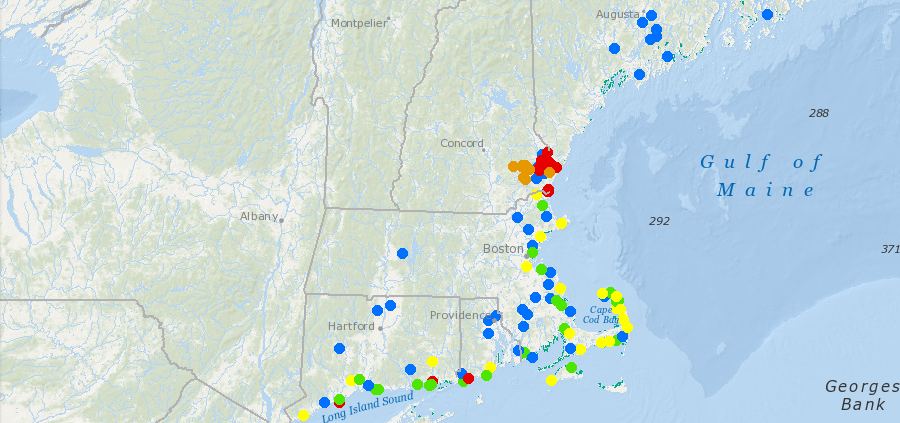Mapping Blue Carbon: New Report Highlights Coastal Ecosystem Benefits
>>EPA Report: “Blue Carbon Reservoirs from Maine to Long Island NY”
Healthy coastal habitats are not only important for Massachusetts’ seafood industry and broader Blue Economy, but also play a critical role in a less visible but valuable coastal asset: blue carbon. Across the Northeast, salt marshes and seagrass beds help mitigate climate change by absorbing large quantities of carbon dioxide from the atmosphere, storing it over hundreds of years (NOAA, Coastal Blue Carbon).
MIT Sea Grant and a network of state and federal agencies, non-governmental organizations, and academic partners, are bringing these blue carbon reservoirs into the spotlight. Through a collaborative effort involving extensive research and mapping, EPA New England has announced the release of the “Blue Carbon Reservoirs from Maine to Long Island NY” report (EPA Press Release).
MIT Sea Grant’s Assistant Director for Advisory Services Rob Vincent co-authored the report, working closely with the Salt Marsh Working Group. Vincent also helped calculate baseline salt marsh carbon storage values for the Northeast and mid-Atlantic Regions to inform the development of an EPA carbon credit program. In fact, healthy marshes are one of the most effective natural carbon sinks on the planet.
During daily tidal flows, marine sediments and organic debris travel into marsh areas and are trapped by thick vegetation, ultimately sequestering 4-10x more carbon than upland forests (EPA Report). Still, carbon in salt marshes is largely stored out-of-sight in the soil and roots, elevating the need to collect data and highlight this coastal resource.

Salt marsh habitat in the Northeastern U.S. (Photo: Rob Vincent, MIT Sea Grant)
Similarly, eelgrass meadows are often hidden from the public eye, submerged in New England’s near-shore waters. As the tide goes in and out, eelgrass promotes sedimentation of organic particles from the water column, capturing carbon from far beyond the meadows themselves. But until recently, the ability of seagrasses to accumulate and sequester carbon was overlooked (EPA Report).

Eelgrass build organically rich peat layers below the meadow. (Photo: Phil Colarusso, EPA)
MIT Sea Grant Coastal Ecologist Julie Simpson collaborated with the New England Blue Carbon Inventory Workgroup, aggregating data to help visualize and understand the climate mitigation role seagrasses play. Simpson also co-authored a 2020 blue carbon paper published in Estuaries and Coasts, Factors Influencing Carbon Stocks and Accumulation Rates in Eelgrass Meadows Across New England, USA. The researchers surveyed 11 meadows across New England, data that was included in the newly released EPA Report and associated database.
The EPA Report examines coastal habitats spanning the northernmost point in Maine to the southern shores of Long Island, New York. The goal of this regional effort was to produce a baseline database and map of blue carbon habitat acreage and estimated sequestered carbon. The habitat distribution and sediment carbon heat maps can be accessed on the Northeast Ocean Data Portal: www.northeastoceandata.org/eelgrass.
The geographic area of focus in this report includes about 218,222 acres of eelgrass meadows and salt marshes, estimated to provide a reservoir of over 7.5 million metric tons of blue carbon. Using the EPA greenhouse gas equivalency calculator, this quantity of stored carbon is equivalent to the emissions associated with the energy use of nearly 3.5 million homes over the course of an entire year, or the burning of over 30.5 billion pounds of coal.
While the carbon stock estimates in this report represent only a fraction of the actual quantity of accumulated carbon in these habitats, these collaborative efforts help inform coastal management policies and climate change mitigation practices, and bring the quiet strength of New England ecosystems to light.
________________________________________________________________________________
Background (EPA Press Release)
During the 2017 Conference of New England Governors and Eastern Canadian Premier, the management of “blue carbon resources to preserve and enhance their existing carbon reservoirs” was identified as a possible regional climate change action to mitigate and reduce greenhouse gasses. In June 2020, EPA Region 1 initiated an effort to establish a baseline of New England’s blue carbon inventory. Working with New England state and federal (USGS and USDA) agencies, academic experts, and non-governmental organizations and utilizing a contract with the Northeast Regional Ocean Council (NROC), datasets of New England’s eelgrass meadows and salt marsh habitats (current and historic) and marine soil cores were identified and entered into an interactive map on the Northeast Ocean Data Portal. Soil organic carbon stocks within these marine habitats were also used to calculate blue carbon stocks.




